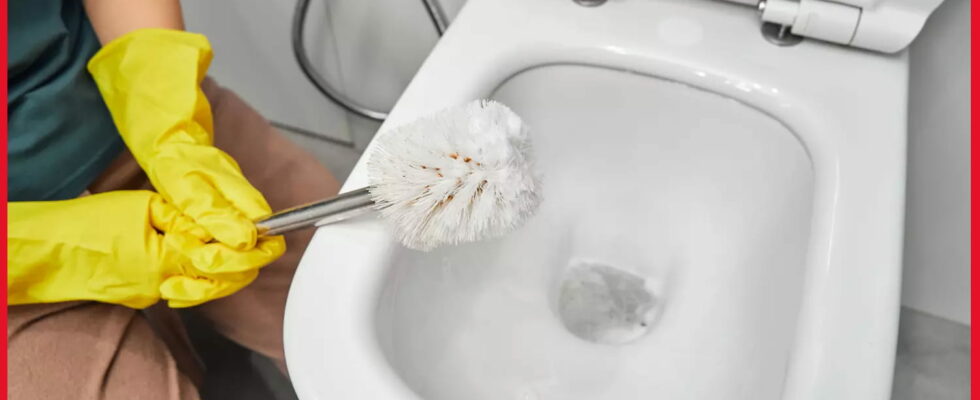Everyone hates cleaning the toilet brush. However, there is an easy method that everyone should know to disinfect it without getting your hands dirty.
It is important to clean your bathroom and toilet at least once a week to prevent these rooms from becoming a breeding ground for bacteria and germs. But often, we forget to disinfect one object, for the simple reason that it is one of the most disgusting elements of the bathroom to clean. We are not talking about the toilet bowl, but the toilet brush.
Yet, it is an essential object for bathroom hygiene. If it is not maintained properly, not only does it become an unpleasant object to use, but it can also contribute to spreading bacteria in your bathroom. In addition, a dirty brush gives off foul odors, making your bathroom space even less welcoming. To avoid this, it is crucial to clean and disinfect your brush regularly, ideally once a week.
There is a simple and hygienic method to clean it, without making you want to vomit along the way. First of all, we absolutely avoid the classic method that many use, which consists of rinsing the brush under the water in the tank or, worse, enclosing it in its still damp holder. This allows germs to proliferate. In addition, the stagnant water at the bottom of the brush holder becomes a real breeding ground for bacteria, transforming this hygiene gesture into a much more unpleasant task the next time.

The method we suggest is just as easy and more effective for cleaning your toilet brush, without having to get your hands dirty or deal with the smell or sight of residue. Once the toilet bowl is cleaned, soak the brush in the bowl. Then, add hot water and bleach directly (you can also use white vinegar if you prefer a more natural solution). Let the brush sit for 30 minutes to 1 hour. This will help dislodge encrusted dirt and thoroughly disinfect the bristles of the brush without you having to intervene manually.
Remove the brush and flush the toilet, then throw some hot water on the brush to remove any remaining product. Finally, don’t forget to dry it. This is an often overlooked but essential step to prevent bacteria from growing. After rinsing the brush, it is important to let it air dry. You can simply place it on a paper towel. This allows the water to drain and prevents moisture from building up in the brush holder.
While the brush is drying, don’t forget to clean the brush holder as well. This one is often overlooked, but it accumulates stagnant water and bacteria. Pour a little white vinegar and warm water inside, scrub it, and rinse with warm water. Dry it thoroughly before replacing the brush.
